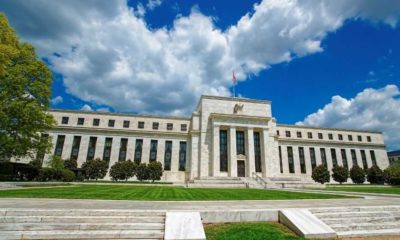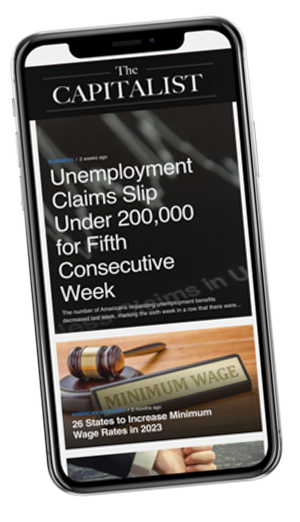Business
Do You Know What’s Driving The Market?
Yields on bonds and Treasuries have been falling for the best part of 30 years, and the debate among analysts is whether the current record lows of 1.3%-1.4% are a temporary bottom figure or whether there is a chance they could go even lower.
Meanwhile, US stocks have seen an improvement during the most recent yield fall.
Read on for the explanations.
What is the correlation between stocks and yields?
Typically, stocks and yields move together.
Whether they converge or diverge depends on what historical data you look at.
For example, in the latter half of 2013, their correlation was in the negative, meaning that if yields rose, stocks would fall.
However, an average of the last 20 years shows that the two figures have had a positive correlation, albeit a minuscule 0.2%.
Now in 2016, the first six months have seen the two maintain a positive relationship with around 0.6%, higher than the 20-year average.
This is close to the relationship that crude oil prices and US stocks have experienced this year, at about 0.5%.
In this period, as the S&P 500 has seen improved performance and a rise in value, so have Treasury yields.
There is certainly a close relationship between the two: in what direction that relationship takes them is the big question.
And with record low yields experienced by the Treasury last Tuesday, the fact that stocks are conversely holding up very well begs many questions.
The pickup that the S&P experienced last Wednesday was in contrast to the previous day’s performance (see a week long view below).
That day saw a flurry of panic-stricken investors moving shares from risky industries like healthcare and tech to boring but more assured industries like utilities.
Now, the relationship between stocks and yields is of course incredibly close.
Concerns around the economic strength of the global and national economies will play havoc with stock prices which will work to depress the yields that bonds are being juiced for simultaneously.
[ms_divider style=”normal” align=”left” width=”100%” margin_top=”30″ margin_bottom=”30″ border_size=”5″ border_color=”#f2f2f2″ icon=”” class=”” id=””][/ms_divider]
[ms_featurebox style=”4″ title_font_size=”18″ title_color=”#2b2b2b” icon_circle=”no” icon_size=”46″ title=”Recommended Link” icon=”” alignment=”left” icon_animation_type=”” icon_color=”” icon_background_color=”” icon_border_color=”” icon_border_width=”0″ flip_icon=”none” spinning_icon=”no” icon_image=”” icon_image_width=”0″ icon_image_height=”” link_url=”https://offers.thecapitalist.com/p/58-billion-stock-steal/index” link_target=”_blank” link_text=”Click Here To Find Out What It Is…” link_color=”#4885bf” content_color=”” content_box_background_color=”” class=”” id=””]This one stock is quietly earning 100s of percent in the gold bull market. It's already up 294% [/ms_featurebox]
[ms_divider style=”normal” align=”left” width=”100%” margin_top=”30″ margin_bottom=”30″ border_size=”5″ border_color=”#f2f2f2″ icon=”” class=”” id=””][/ms_divider]
2016… we all remember what it was like to be 16, right?
Being 16 represents, for many, a time in their life of uncertainty, fragility, and general confusion.
This applies to 2016 with regards to its political and economic situation.
Some factors are:
– Chinese devaluation
– Britain’s narrow decision to leave the European Union
– Uncertainty over whether the Fed will hike rates
These combine to form a massive shock to the international economy, and many are worrisome over the chances of healthy economic growth.
This is all in addition to huge concerns ever since the 2008 financial crash: there is a prediction virtually every week of an imminent financial meltdown similar in scale to eight years ago.
As mentioned, there is also the concern over whether the Federal Reserve will hike rates this year, the odds of which have been slashed by most forecasters.
A raise would increase the intimacy of the relationship between stocks and yields, and thus a decreased likelihood of this would reduce bonds and push stocks up.
But wait a minute.
One standard piece of conventional stock market wisdom is that some marginal interest in the assets comes mainly from investors’ frustrations at low yields that bonds offer.
So therefore stocks should rise with yields falling.
But as mentioned before, this is not the case generally speaking.
The graph shown at the beginning of the article shows the opposite, bar one blip.
Expect the following:
– Central banks to continue their course of quantitative easing and intervention measures to stimulate growth
– Stagnant economic growth worldwide, in particular with the current Brexit furor
– These two will combine to push up the price of bonds and push down their yields
Low yields aren’t what is guiding the market and thus flies in the face of those naysayers who blame central banks for fueling a new bubble in the equities market.
It is in fact bond prices, which move inversely to yields (high bonds yield small) and stock prices are moving in opposite directions since an investor buying one is deemed by deduction to have sold the other.
Therefore, it is an average condition for the relationship to be tightened.
On the one hand, yields have been falling for some time and so a stabilization period is likely.
On the other, because of how long and consistently they have been falling we cannot say for sure they have hit absolute bottom.
Either way, don’t bank on a huge fall.



















